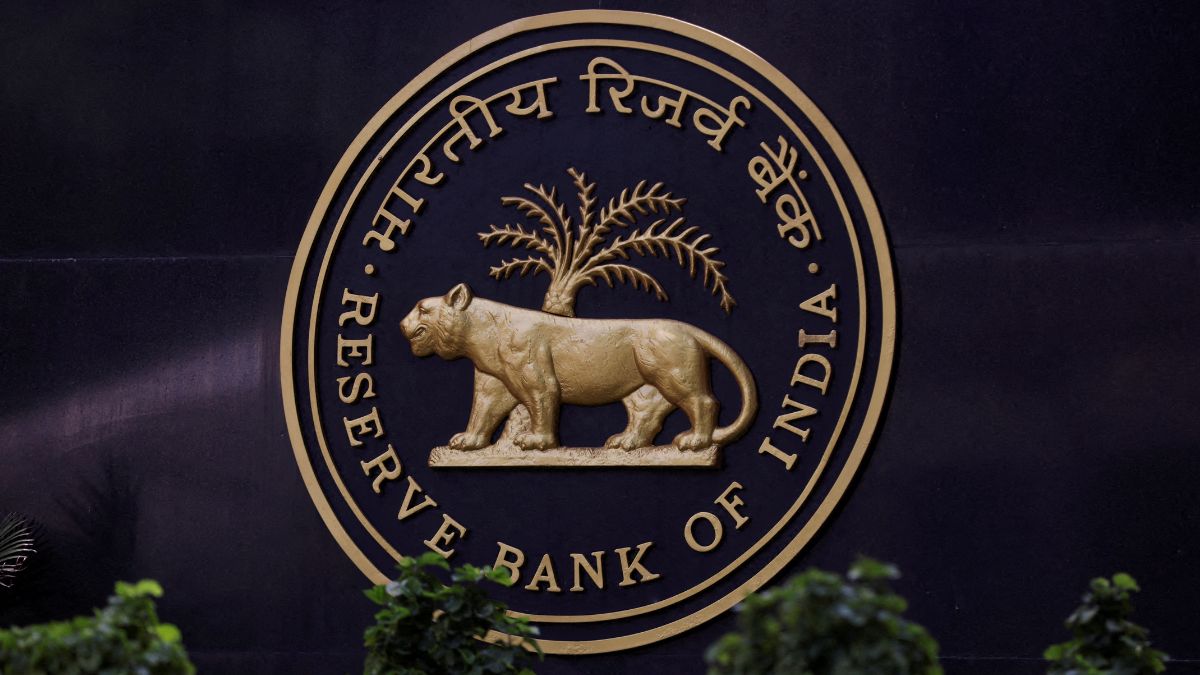Lending rates could fall further as RBI MPC likely to reduce repo rate again
 Reserve Bank of India (RBI) logo inside its headquarters in Mumbai | Reuters
Reserve Bank of India (RBI) logo inside its headquarters in Mumbai | Reuters
In its previous meeting in February, the Reserve Bank of India's monetary policy committee (MPC) cut the repo rate by 25 basis points (0.25 per cent) to 6.25 per cent. This was the first cut in the benchmark rate at which it lends money to commercial banks in five years, finally bringing some cheer to borrowers reeling under high interest rates.
There may be more cheer in store for borrowers as the MPC meets between April 7-9, with another 25 bps cut in repo rate expected this time.
The cooling inflation opened up room for the MPC to cut rates further. Now, the heightened economic uncertainty following US President Donald Trump's sweeping reciprocal tariffs announcements make a case for rate cut even stronger.
Trump, this week, announced reciprocal tariffs on as many as 60 countries. India has been slapped a 26 per cent import tariff, which is much higher than many expected, but is lower than many other Asian exporters.
The chances of a recession in the US have gone up post the tariffs as goods in the country will become expensive and that may in turn hurt demand. That will in drag global exports lower and thus economic growth.
Domestically, inflation, especially food prices, which was the single most concern for the central bank keeping rates on hold earlier, has come down significantly. CPI (consumer price index) inflation moderated to a 7-month low of 3.6 per cent in February 2025. Further, the pressure on the rupee against the dollar has also eased in recent weeks. Rupee had hit a record low of 87.95 to a dollar. On Friday it rose above 85 against the dollar for the first time since December 2024.
This means the MPC now has more room to lower interest rates in turn aiding economic growth.
"January-February inflation is tracking an average of 3.9 per cent, below the RBI’s quarterly projection for first quarter of 2025. Building on our early estimate for March, there might be a 40-50 bps undershoot in the actual versus RBI’s projected average. The rupee was the regional outperformer, rallying 2.3 per cent in the past month, as seasonality and dollar weakness coincided." pointed out Radhika Rao, executive director and senior economist at DBS Bank.
She sees a possibility of at least two rate cuts by RBI in the coming months.
"While confident on domestic developments, the MPC is likely to be guarded on the uncertain global backdrop as trade distortions pose stagflationary risks to the US and raise the risk of slower global trade," said Rao.
Santanu Sengupta, chief India economist at Goldman Sachs had said on Friday that he sees an additional 50 bps of monetary policy easing in the current financial year (25 bps each in the second and third quarter of 2025).
Apart from the repo rate cut in February, in recent months the central bank has also infused large amounts of liquidity in the system, close to Rs 6 lakh crore by April, by purchasing domestic bonds as well as foreign assets in lieu of dollar/rupee buy/sell swaps, pointed India Ratings.
It opines that significant easing of monetary conditions will be immensely supportive of ease of financing by domestic industries amid the turbulent operating conditions.
Ratings agency ICRA too sees another 25 bps repo rate reduction this time around. It is also expecting the central bank to continue with its liquidity interventions.
"By maintaining surplus liquidity and ensuring robust credit flow, the RBI aims to stabilise financial markets and shield the economy from global uncertainties, such as trade tensions. This supportive stance promotes sustainable growth domestically while mitigating external pressures. We anticipate further rate cuts and continue positive liquidity measures," said Abhishek Bisen, head of fixed income at Kotak Mahindra AMC.
DMI Finance economists, led by Christopher Wiegand, see 75 bps repo rate reduction in the current cycle with a 25 bps cut this time.
"The policy space for additional measures has increased with inflation falling below the 4 per cent target. Going forward, the RBI is likely to prioritise supporting economic growth while managing inflation and external uncertainties," they said.
They added the liquidity injections could also continue to support economic activity and facilitate repo rate transmission in the banking system.
Business